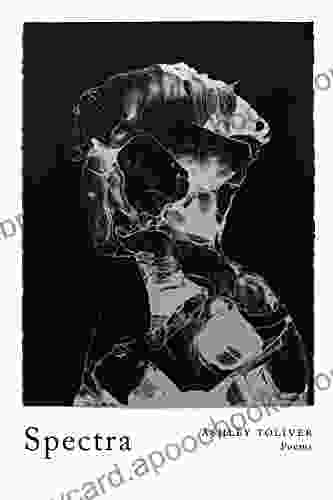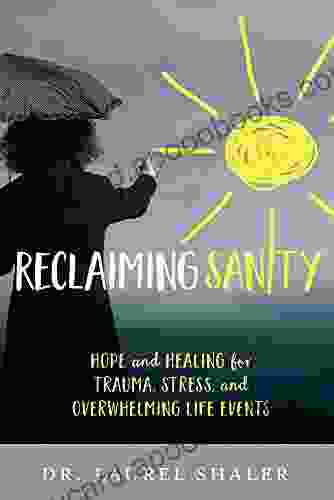The Ultimate Guide to Spotting, Naming, and Stopping Emotional Abuse in Intimate Relationships

Emotional abuse is a serious issue that can have devastating consequences for victims. It can lead to depression, anxiety, low self-esteem, and even physical health problems. Intimate relationships are particularly vulnerable to emotional abuse, as the perpetrator often has a position of power and control over the victim.
4.4 out of 5
| Language | : | English |
| File size | : | 3224 KB |
| Text-to-Speech | : | Enabled |
| Screen Reader | : | Supported |
| Enhanced typesetting | : | Enabled |
| Word Wise | : | Enabled |
| Print length | : | 236 pages |
| X-Ray for textbooks | : | Enabled |
This guide provides essential information on how to spot, name, and stop emotional abuse in intimate relationships. We will cover the following topics:
- What is emotional abuse?
- The signs of emotional abuse
- The effects of emotional abuse
- How to stop emotional abuse
What is emotional abuse?
Emotional abuse is a form of domestic violence that involves the use of verbal or non-verbal behavior to control, humiliate, or intimidate someone.
Emotional abuse can take many forms, including:
- Verbal abuse, such as name-calling, belittling, or threatening
- Non-verbal abuse, such as isolation, stonewalling, or withholding affection
- Psychological abuse, such as gaslighting, manipulation, or control
Emotional abuse can be just as damaging as physical abuse. In some cases, it can even be more harmful, as it can leave lasting psychological scars.
The signs of emotional abuse
The signs of emotional abuse can be subtle and difficult to spot. However, there are some common red flags that you should be aware of:
- Your partner constantly criticizes you or puts you down.
- Your partner tries to control your behavior or isolate you from your friends and family.
- Your partner uses guilt or shame to manipulate you.
- Your partner makes you feel like you're walking on eggshells.
- You're afraid of your partner's reactions.
If you're experiencing any of these signs, it's important to seek help. Emotional abuse is a serious issue and it's important to get out of the situation as soon as possible.
The effects of emotional abuse
Emotional abuse can have a devastating impact on victims. It can lead to depression, anxiety, low self-esteem, and even physical health problems.
Some of the common effects of emotional abuse include:
- Feeling worthless and inadequate
- Having difficulty trusting others
- Experiencing anxiety and depression
- Developing physical health problems, such as headaches, stomachaches, and insomnia
- Having difficulty concentrating and making decisions
Emotional abuse can also have a long-term impact on victims. It can make it difficult to form healthy relationships, trust others, and achieve their full potential.
How to stop emotional abuse
If you're experiencing emotional abuse, it's important to take steps to stop it. The first step is to recognize that you're being abused. Once you've acknowledged the problem, you can start to take steps to protect yourself.
Here are some tips on how to stop emotional abuse:
- Talk to someone you trust about what's going on. This could be a friend, family member, therapist, or domestic violence hotline.
- Set boundaries with your partner. Let them know that you won't tolerate being abused.
- Take care of yourself. This means eating healthy, getting enough sleep, and exercising regularly.
- Build a support system. Surround yourself with people who love and support you.
- Get help from a professional. A therapist can help you to understand the dynamics of emotional abuse and develop coping mechanisms.
Stopping emotional abuse can be difficult, but it's possible. With the right help, you can break free from the cycle of abuse and start to heal.
Emotional abuse is a serious issue that can have devastating consequences for victims. It's important to be aware of the signs of emotional abuse and to seek help if you're experiencing it. With the right help, you can stop emotional abuse and start to heal.
4.4 out of 5
| Language | : | English |
| File size | : | 3224 KB |
| Text-to-Speech | : | Enabled |
| Screen Reader | : | Supported |
| Enhanced typesetting | : | Enabled |
| Word Wise | : | Enabled |
| Print length | : | 236 pages |
| X-Ray for textbooks | : | Enabled |
Do you want to contribute by writing guest posts on this blog?
Please contact us and send us a resume of previous articles that you have written.
 Book
Book Novel
Novel Page
Page Chapter
Chapter Text
Text Story
Story Genre
Genre Reader
Reader Library
Library Paperback
Paperback E-book
E-book Magazine
Magazine Newspaper
Newspaper Paragraph
Paragraph Sentence
Sentence Bookmark
Bookmark Shelf
Shelf Glossary
Glossary Bibliography
Bibliography Foreword
Foreword Preface
Preface Synopsis
Synopsis Annotation
Annotation Footnote
Footnote Manuscript
Manuscript Scroll
Scroll Codex
Codex Tome
Tome Bestseller
Bestseller Classics
Classics Library card
Library card Narrative
Narrative Biography
Biography Autobiography
Autobiography Memoir
Memoir Reference
Reference Encyclopedia
Encyclopedia Andre Gw Hagestedt
Andre Gw Hagestedt Sandy Mitchell
Sandy Mitchell Tony Fadell
Tony Fadell Amy Sophiamehr
Amy Sophiamehr Joe Dispenza
Joe Dispenza Toka Diagana
Toka Diagana Anat Admati
Anat Admati Dave Mason
Dave Mason Patricia B Mcconnell
Patricia B Mcconnell Charles Freericks
Charles Freericks Susan Hatler
Susan Hatler Amr Mohsen
Amr Mohsen Ana Beatriz Pires De Assis
Ana Beatriz Pires De Assis Amine Noum Library
Amine Noum Library Amory Gethin
Amory Gethin Tobias Zoporowski
Tobias Zoporowski Gerry Adams
Gerry Adams Elsa Blomster
Elsa Blomster Amy Lou Jenkins
Amy Lou Jenkins Ross James
Ross James
Light bulbAdvertise smarter! Our strategic ad space ensures maximum exposure. Reserve your spot today!
 Brian WestFollow ·15.1k
Brian WestFollow ·15.1k Quincy WardFollow ·5.5k
Quincy WardFollow ·5.5k Hugh ReedFollow ·11.6k
Hugh ReedFollow ·11.6k Demetrius CarterFollow ·9.8k
Demetrius CarterFollow ·9.8k Dallas TurnerFollow ·3.4k
Dallas TurnerFollow ·3.4k George HayesFollow ·17.3k
George HayesFollow ·17.3k Rodney ParkerFollow ·15.2k
Rodney ParkerFollow ·15.2k Quentin PowellFollow ·13.6k
Quentin PowellFollow ·13.6k

 Roald Dahl
Roald DahlImmerse Yourself in a Mesmerizing Tapestry of Creativity:...
Prepare to be captivated by "Spectra," an...

 Clarence Brooks
Clarence BrooksUnleash Your Inner Taylor with Red Piano Vocal Guitar:...
Embrace the Red Era...

 Jeffrey Hayes
Jeffrey HayesUnlock Your Child's Academic Potential: A Comprehensive...
In today's rapidly changing...

 William Golding
William GoldingBrave Elizabeth: A Captivating Tale of Resilience and...
Immerse Yourself in a Riveting Historical...

 Curtis Stewart
Curtis StewartUnveiling the Heartfelt Melodies of Taylor Swift: A...
Step into the enchanting world of Taylor...
4.4 out of 5
| Language | : | English |
| File size | : | 3224 KB |
| Text-to-Speech | : | Enabled |
| Screen Reader | : | Supported |
| Enhanced typesetting | : | Enabled |
| Word Wise | : | Enabled |
| Print length | : | 236 pages |
| X-Ray for textbooks | : | Enabled |














